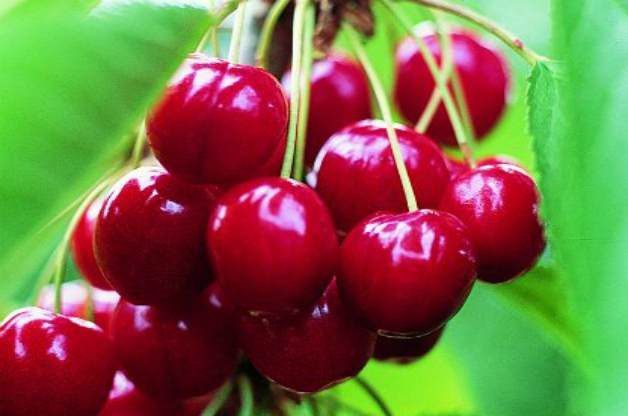Growing Cherries
Updated: Apr. 24, 2020

With a little nurturing, you can grow cherry trees with ease.
Does the thought of eating sweet Bing cherries straight off the tree or harvesting tart Montmorency fruits for pie make your mouth water?
If you answered “Yes,” ask yourself, “How daring are you?” Growing your own cherry trees isn’t for the faint of heart.
Cherries, particularly the sweet ones, are susceptible to insect and fungal infestation and may require frequent applications of pesticide and fungicide. They also need to be pruned regularly, allowing sunlight to nurture flower-bud development and help them dry out after a rain so fungus doesn’t take hold. And unless you throw a net over the entire tree, says Penn State Cooperative Extension Agent Mary Concklin, who grew Bing cherry trees at her home in New York, “you’ll be fighting the birds for the cherries.”
Still, the rewards are many:
- A full-size, mature cherry tree will produce 50 to 100 pounds of fruit in one season. That’s a lot of pies, jam and cherry-stained smiles.
- Cherry trees are also a glorious sight in spring, covered with white blossoms that fall like snow.
- And something that tastes so delicious can be good for you, too. A handful is less than 50 calories, and they’re high in vitamin A and potassium. There’s even scientific evidence that suggests eating cherries may ease inflammation from arthritis.
It sounds to me like growing cherries in my backyard is worth the trouble.
Be Fruitful
To get your cherry tree off to a great start, plant it in a sunny, dry site, with good air circulation and fertile soil (sandy loam is best). Unless you have acres to spare, home gardeners should choose cherries grafted to dwarf or semi-dwarf stock, such as Colt, Gisela and MxM.
To give you some idea of size, mature, standard-sized sweet cherry trees grow 40 to 50 feet high; tart are generally smaller, around 25 feet. Dwarf varieties, such as North Star (a full-dwarf tart), grow 7 to 10 feet, while Meteor (a semi-dwarf) reaches 10 to 15 feet.
Also consider in what part of the country you live. In general, cherries don’t do well in extreme climates. Trees on Colt rootstock, for example, can be very sensitive to drought and are not cold-hardy—bad news for northern climes. One of the most popular sweet cherries, Bing, doesn’t grow as successfully on the wet East Coast, where too much rain can split and rot fruit. Contact your local Extension service agent to ask what cherry varieties grow best in your area.
Sweet cherries are the most challenging to grow. Earlier bloomers, they’re often caught in spring frosts and rain, which can crack or even eliminate the fruit and ruin the crop. Tart cherries are more resistant to brown rot (the enemy of all cherry trees) and cracking. Plus, most sweets need a second variety for cross-pollination, though not every combination will be fruitful. (Yet another reason to call your Extension agent.)
It’s important to prune cherry trees regularly. Cherry trees can be trained by using central or modified leader system pruning techniques. The central leader system, compared to the open-vase method, encourages one main trunk with strong side branches. Be sure to allow plenty of space between limbs and smaller branches to allow air and sunlight to reach the center of the tree.
Harvest How-to
To ensure a fruitful harvest, keep birds away with either nets or other barriers.
“You can’t use noisemakers like the commercial growers, or your neighbors might get a little mad at you,” says Mary. “But you can take some metallic CDs and string them up around your trees. That will work for a while. Nets, however, are your best defense.”
Wait until the cherries are red before harvesting—even the tart ones sweeten up considerably the last few days they ripen. Depending on your tree’s size, you’ll probably be picking them every other day.
Pies, Jams and More!
Speaking as an inveterate jam maker, I advise you to invest in an inexpensive cherry pitter (you can get them for about $30). Otherwise, you’ll be sweating over every pie, crisp or jar of your best-recipe preserves (mine replaces a quarter cup of cherries with a quarter cup of Kirschwasser, or cherry brandy!). You can freeze some of your bounty, pits and all, so you don’t have to pit ’em all by hand at harvest time.
But don’t restrict cherries to just dessert. They add a spark to savory foods, too. Pork and beef especially benefit from their sweet or tart flavor. For a party recently, I mixed a can of cherry pie filling with orange marmalade and orange juice before pouring it over a baking ham. It took only minutes to make—just a little less time than it lasted on the dinner table.